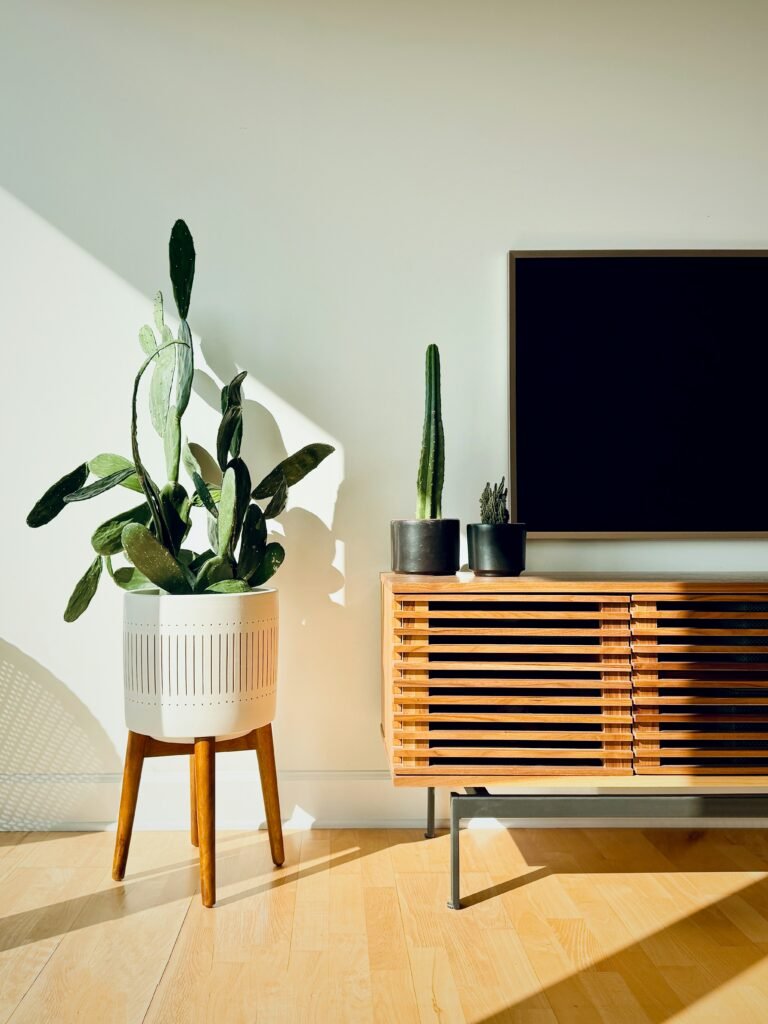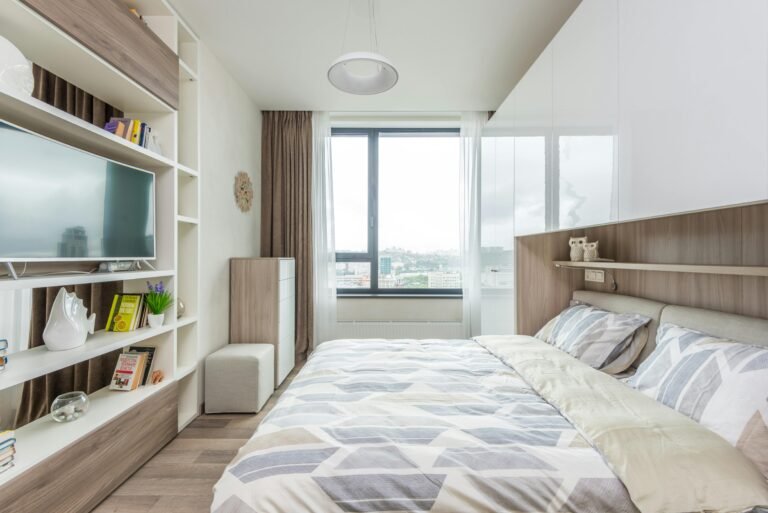Discover how a neat home can lift your mood instantly. Enjoy reading these simple tips and let a clutter-free space spark your creativity.
Are you overwhelmed by too much stuff at home? You are not alone. This guide offers practical steps that experts recommend. According to the American Psychological Association, a tidy space can lower stress. Follow these steps to simplify your home and life.
The Psychology of Clutter
Understand why clutter builds up and affects you. Knowing your habits makes it easier to change them.
Why We Accumulate Clutter
- We feel attached to our belongings.
- We fear wasting useful items.
- We postpone decisions until later.
- We buy on impulse.
The Impact of Clutter on Our Lives
- Clutter can cause stress and anxiety.
- It reduces your focus and productivity.
- You waste time looking for things.
- Your home feels less welcoming.
Pro Tip: Think about why you hold on to certain items. This can help you choose what to keep and what to let go.
Getting Started: Preparing for Your Decluttering Journey
Start your decluttering journey with a clear plan. Follow these steps for a smooth start.
Set Clear Goals
- Decide what a neat space looks like for you.
- Imagine your ideal home environment.
- Set small, clear targets like “clear one drawer per day”.
Create a Plan
- Break your project into simple tasks.
- Focus on the areas that stress you the most.
- Set a realistic timeline for each task.
Gather Supplies
- Get boxes or bags for sorting items into Keep, Donate, Sell, or Trash.
- Have cleaning supplies ready for cleared spaces.
- Use labels and markers to keep things organized.
Pro Tip: Begin with a small area to build your confidence. This success helps you tackle bigger spaces.
Decluttering Strategies: Choosing Your Approach
Explore these popular methods to find your best fit.
The KonMari Method
This method, created by Marie Kondo, urges you to keep only the items that spark joy.
Pros:
- You think carefully about each item.
- You organize by type rather than by room.
- You appreciate what you own.
Cons:
- This method can take time.
- It might be hard if you find it tough to let go.
- “Sparking joy” is subjective and personal.
The Four-Box Method
This method sorts items into four groups: Keep, Donate, Sell, and Trash.
Pros:
- It is simple and clear.
- You take quick action on each item.
- It makes decisions faster.
Cons:
- It can be hard with a lot of items.
- You might make too many decisions at once.
- It does not help organize the kept items.
The 90/90 Rule
Keep items you used in the last 90 days or will use in the next 90 days.
Pros:
- This rule is clear and simple.
- You see which items are truly needed.
- You are encouraged to declutter often.
Cons:
- It may miss seasonal items.
- You might lose sentimental items.
- It might not work with every type of item.
Pro Tip: Try different methods. You may mix ideas to create your own plan.
Room-by-Room Decluttering Guide
Use these tips to clear clutter in each room.
Living Room
- Clear surfaces like coffee tables and shelves.
- Sort entertainment items like books and games.
- Keep only decorations that you love.
Kitchen
- Clear counters of rarely used gadgets.
- Dispose of expired food from the pantry.
- Organize cabinets with simple dividers and bins.
Bedroom
- Sort clothing with a simple method.
- Clear nightstands and dressers of extra items.
- Organize seasonal items under the bed.
Bathroom
- Discard old medications and expired products.
- Use small bins in drawers to separate items.
- Keep only the products you use often.
Home Office
- Scan and save documents digitally.
- Create a simple filing system for papers.
- Keep your desk clear to boost focus.
Pro Tip: Ask yourself, “Would I pack this if I moved tomorrow?” This helps choose what to keep.
Dealing with Sentimental Items
Sentimental items are often the hardest to clear. Consider these ideas:
Create a Memory Box
Keep a special box for items that hold dear memories.
Digitize Where Possible
Scan photos and documents to save memories without keeping extra items.
Practice Gratitude
Thank each item for its past role before letting it go.
Consider Alternatives
Select one favorite item from a group of memories to display.
Pro Tip: Take a photo of difficult items. This way, you keep the memory without the clutter.
Maintaining a Clutter-Free Space
A neat home requires regular care. Follow these habits to keep it that way.
Implement the One-In-One-Out Rule
For each new item, remove one old item.
Regular Decluttering Sessions
Set a weekly or monthly time to clear small amounts of clutter.
Create Designated Spaces
Give every item a clear home to avoid random piling up.
Mindful Purchasing
Ask if you really need something before you buy it.
The Benefits of a Decluttered Life
Living without clutter reaps many rewards:
Reduced Stress and Anxiety
A clean space gives you a calm mind.
Increased Productivity
Finding items quickly saves time and energy.
Improved Focus
A tidy room helps you concentrate better.
Financial Benefits
Selling or donating unused things can boost your savings.
Better Relationships
A neat home creates more happy moments with loved ones.
Pro Tip: Notice the good changes in your life. Let these wins keep you motivated.
Eco-Friendly Decluttering
Consider the planet as you declutter. These tips help you act green.
Donate Usable Items
Give items in good shape a new home through charity.
Recycle Responsibly
Find the proper recycling options for items like electronics and paper.
Upcycle and Repurpose
Get creative and give old items a new purpose.
Sell Valuable Items
Use online markets or local shops to sell quality items.
Decluttering in the Digital Age
Clear your digital space using similar strategies.
Clean Up Your Desktop
Organize files into folders and remove excess shortcuts.
Unsubscribe from Emails
Reduce inbox clutter by letting go of unwanted newsletters.
Organize Digital Photos
Delete duplicates and neatly group your photos into albums.
Streamline Social Media
Unfollow accounts that do not add value to your life.
Pro Tip: Set a fixed time each week for digital decluttering as you do with physical spaces.
Conclusion: Embracing a Simplified Lifestyle
Decluttering is a journey toward a simpler and more happy life. Small steps can change your day-to-day routine.
- Create a calm and pleasant space.
- Reduce stress and boost productivity.
- Save time and money.
- Live in a more sustainable way.
- Focus on what matters most.
Remember, progress is more important than perfection. Start small, stay consistent, and celebrate every success.
Ready to begin? Check out this hardware organizer that can help you keep your space neat: https://amzn.to/3TP6OCp
As an Amazon Associate, I earn from qualifying purchases.
Frequently Asked Questions
How do I start decluttering my home?
Start small. Choose one area, set clear goals, and sort items into groups such as Keep, Donate, Sell, or Trash.
What is the easiest method to follow?
Many find the Four-Box Method helpful as it simplifies choices and leads to quick progress.
How often should I declutter?
It is best to have regular sessions, such as weekly or monthly, to keep your home tidy.
Can digital decluttering help reduce stress?
Yes. Clearing your desktop and email inbox can boost your productivity and lower your anxiety.
Explore this topic: Productivity
Last updated on August 7, 2025








